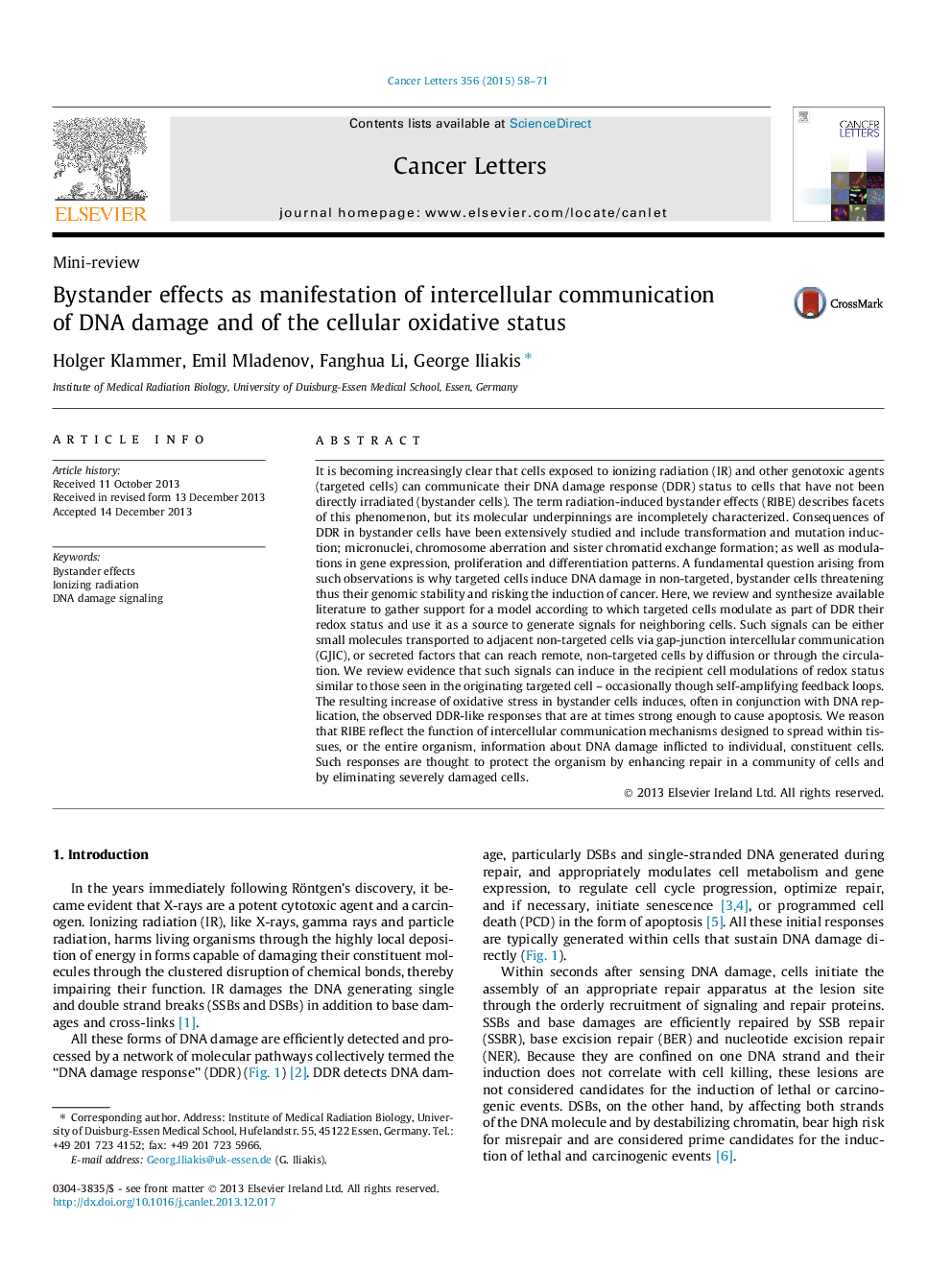| کد مقاله | کد نشریه | سال انتشار | مقاله انگلیسی | نسخه تمام متن |
|---|---|---|---|---|
| 2112544 | 1084395 | 2015 | 14 صفحه PDF | دانلود رایگان |

It is becoming increasingly clear that cells exposed to ionizing radiation (IR) and other genotoxic agents (targeted cells) can communicate their DNA damage response (DDR) status to cells that have not been directly irradiated (bystander cells). The term radiation-induced bystander effects (RIBE) describes facets of this phenomenon, but its molecular underpinnings are incompletely characterized. Consequences of DDR in bystander cells have been extensively studied and include transformation and mutation induction; micronuclei, chromosome aberration and sister chromatid exchange formation; as well as modulations in gene expression, proliferation and differentiation patterns. A fundamental question arising from such observations is why targeted cells induce DNA damage in non-targeted, bystander cells threatening thus their genomic stability and risking the induction of cancer. Here, we review and synthesize available literature to gather support for a model according to which targeted cells modulate as part of DDR their redox status and use it as a source to generate signals for neighboring cells. Such signals can be either small molecules transported to adjacent non-targeted cells via gap-junction intercellular communication (GJIC), or secreted factors that can reach remote, non-targeted cells by diffusion or through the circulation. We review evidence that such signals can induce in the recipient cell modulations of redox status similar to those seen in the originating targeted cell – occasionally though self-amplifying feedback loops. The resulting increase of oxidative stress in bystander cells induces, often in conjunction with DNA replication, the observed DDR-like responses that are at times strong enough to cause apoptosis. We reason that RIBE reflect the function of intercellular communication mechanisms designed to spread within tissues, or the entire organism, information about DNA damage inflicted to individual, constituent cells. Such responses are thought to protect the organism by enhancing repair in a community of cells and by eliminating severely damaged cells.
Journal: Cancer Letters - Volume 356, Issue 1, 1 January 2015, Pages 58–71